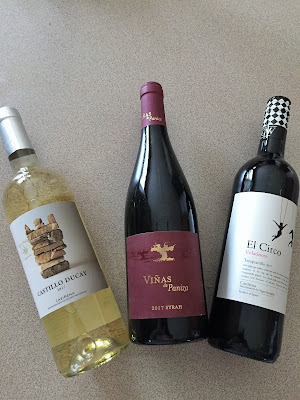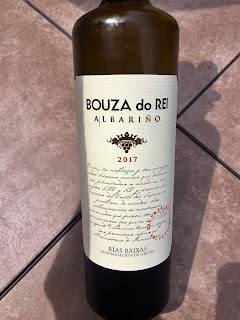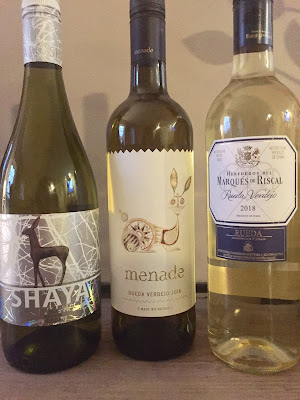Cooperatives
are typically not one’s first choice when it comes to picking quality
wine. If you’re unfamiliar with the term, wine cooperatives are made of
up individual owners of vineyards that grow grapes and collaborate to
produce wines together. There are for sure additional benefits, but as
you can imagine it makes the production of wine easier for many of these
small growers sharing a production facility, being able to invest in technology to better the quality produced, being able to market
and promote their wines on a larger scale and maybe investing in the assistance of experienced enologists.
In
Italy wine cooperatives are very common. Our host, Kevin of Snarky
Wine, for our Italian Food, Wine & Travel group this month shares
some shocking facts introducing our theme.
About 50% of the country’s wine is derived from cooperatives. If that
doesn’t leave you intrigued read on to discover what role Val d’Oca plays in the production of Prosecco in the Veneto wine region.
The Winery ~ Val d’Oca
Located in the Prealps of the Treviso area between the towns of Conegliano and Asolo is the Val d’Oca
Consortium. Established back in 1952 the coop has grown to almost 600
growers on about 2,000 acres. They’re part of the Cantina Produttori di Valdobbiadene
Cooperative and are stated to be the largest and oldest producers of
Prosecco. The grapes are grown in both the Treviso area as well as the
more reknowned Valdobbiadene Conegliano known for it’s quality prosecco. The Valdobbiadene Conegliano area was promoted to the DOCG designation back in 2009.
The Wines
Ninety percent of the Val d’Oca’s production is from the glera
grape, the main grape used in prosecco. It’s no surprise then that
Prosecco is their pride and joy and I sampled a number of different
styles to share with you.
Val d’Oca Rose’ Extra Dry – Made of both red and white grapes in the charmat/martinotti
method. This wine showed beautiful pale pink hues. Fresh raspberries
on the nose. A fresh, enjoyable prosecco with raspberries and
strawberries dancing on the palette. ABV 11% $11
Val d’Oca Prosecco DOC Extra Dry – Made of 85% glera with 15% pinot grigio and chardonnay in the charmat/martinotti method. A brilliant, straw color with aromas of lemon, florals and apple. Crisp with mouthwatering, bright acidity up front. Dry, citrus with a tingly sensation of bubbles on the finish that soften. ABV 11% SRP $13
2018 Val d’Oca Millesimato Valdobbiadene Superiore DOCG Extra Dry – Made of the same blend of 85% glera with 15% pinot grigio and chardonnay in the charmat/martinotti
method. A crystal, pale yellow color in the glass. Showing more
florally aromatics towards peach and apple. Dry with citrus, but I
found these bubbles to be more elegant than the prior bottle. SRP $18.
SRP 11% $17
Val d’Oca Valdobbiadene Superiore Rive di San Pietro di Barbozza DOCG Brut – Made of glera grapes sourced from a small appellation within the hill town of San Pietro di Barbozza. The term rive signifies the steep slopes in which the grapes are grown. 43 rive exist within the Valdobbiadene and are of higher quality showing particular characteristics reflecting the terroir of each. The most elegant of all with a beautiful finesse to the bubbles and enticing florals on both the nose and palette. SRP $32
-
- Cindy at Grape Experiences shares "On Wine Co-ops, Sicily's Cantine Settesoli and Mandrarossa Winery"
- Pinny at Chinese Food and Wine Pairings shares “Celebrate Chinese New Year, Observe Italian wine coop evolution, OMG yummy Prosecco!”
- Katarina at Grapevine Adventures shares "Cincinnato - A Cooperative in Lazio Focused on Native Grapes"
- Linda at My Full Wine Glass shares “Prosecco, coop-style: What do these tasters say?”
- Jane at Always Ravenous shares “Popping the Corks on Cooperative Prosecco”
- Marcia at Joy of Wine shares "Cooperetiva Produttori del Barbaresco"
- Liz at What's in That Bottle shares "What’s Up with Italian Wine Cooperatives?"
- Wendy at A Day in the Life on the Farm shares "Godendo Aperitivo Prima di Cena "
- Lynn at Savor the Harvest shares "Alpine Wine Cooperative - How Things Roll in Alto Adige"
- Susannah at Avvinare shares “Visiting Lake Garda through the wines of Cantina Colli Morenici”
- Jeff at Food Wine Click! shares "The Italian Wine Cooperative Surprise"
- Camilla at Culinary Adventures with Camilla shares "Hardworking Kids, Fresh Pasta, and a Red Wine from Vallevò"
- Gwendolyn at Wine Predator matches " 3 Bottles of Bubbles from Italy’s Val D’Oca Paired with Butternut Crab Bisque and Polenta Shrimp"
- Nicole at Somm's Table shares "The History of Amarone at Cantina Valpolicella Negrar, and Domìni Veneti Amarone Classico with Decadent, Braised Lamb Shanks"
Importer: Prestige Wine Imports and compliments of Susannah at Vigneto Communications
*These wines were provided as samples, but opinions are my own.










